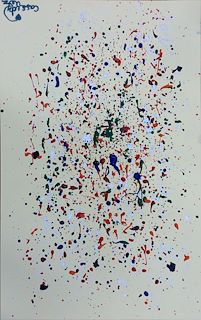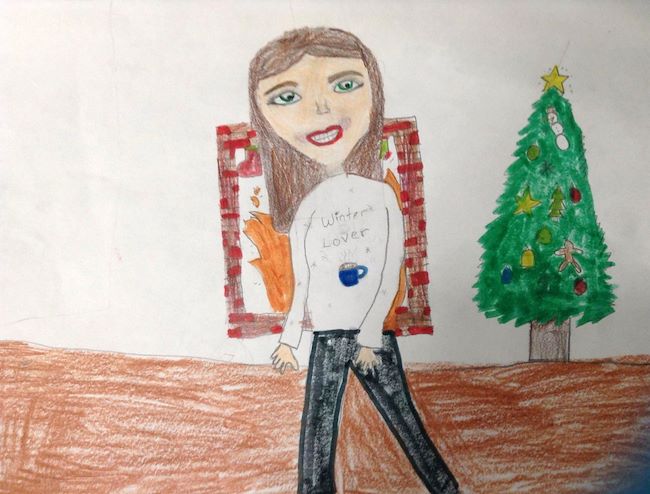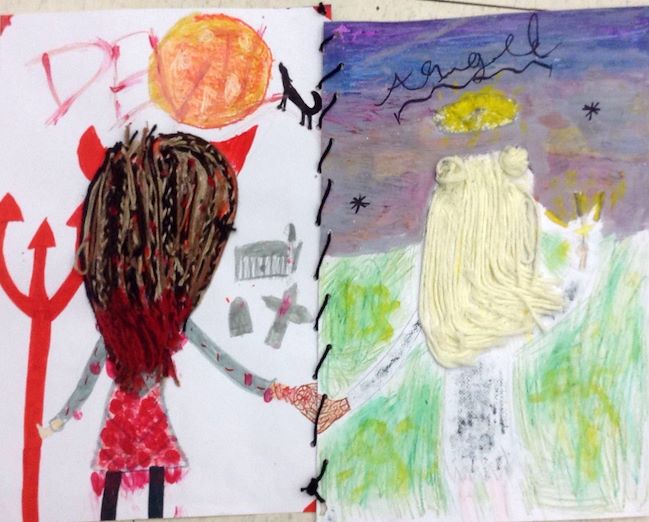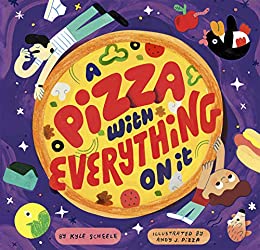Two of my texture paintings are included in the Annual Member Spotlight Art Show at The Phipps Center for the Arts. The show is virtual this year, and here is the video.
Friday, December 17, 2021
Non Traditional Tools for the Art Room
This year marks my seventeenth year of teaching elementary art. It is odd to think I've been in the classroom for that long, but I've picked up a few things along the way and this post shares some of the more unusual items that I use on a regular basis in my art room, and explains what I do with those items. Click the image to be directed to an Amazon Affiliate link to the product!
I use these crab crackers All. The. Time. They will open regular glue bottles, gallon glue bottles, paint containers, glaze jars-anything with ease. I've also seen people use hand held nut crackers, but these are great because the smaller space closer to the hinge is the perfect size for the orange tip of an Elmer's glue bottle for those situations that call for the tip to be removed and cleaned out while the larger space is perfect for larger lids. THIS is my best tip for new art teachers. Don't hurt your hand or waste time soaking the bottle-use one of these!
I also got a few of these half sheet pans with cooling racks. These are awesome for clay! The cooling rack allows for even drying which prevents cracking, and the half size is more manageable for heavier projects such as clay.
When I finish taking down a bulletin board I use this telescopic magnet to double check that I'm not leaving any sharp staples on the floor.
I have a cart like this one for my art displays. On the bottom shelf I have a bin of the phone holders that are listed above for clay plaque projects and a bin of these magnetic hooks for hanging art from the crossbeams of the ceiling. The middle shelf has staplers, staples, thumb tacks, tape, etc. Anything I anticipate needing as I am putting up artwork. One of the bins that hang from the side I use for the staple remover and telescoping magnet listed above, scissors, pen, pencil, and Sharpie. The second one I use to collect used staples. Under the wooden lid I keep an X-acto knife set and any display signs that I think I will want to use again in the future. The lid is nice to put a stack of artwork on so I don't have to bend down to pick up each new work. Sometimes I use a paper sorter like this to hold a larger stack of artwork.
These FIFO (First In, First Out) bottles are amazing for paint distribution. I use a cart similar to the one above and have these bottles in bins on the top shelf with rainbow colors, black, brown, and white. The next shelf has paper plates and/or magazines for palettes, and the bottom shelf has muffin tins that I use with portion cups for more expensive liquids such as glaze or metallic paint (TIP: if you only need six spots, the Dollar Tree has small muffin tins!). I also have a paper towel holder on it with nice, absorbent paper towels just in case.
Kitchen scrapers like the one pictured are very helpful in the art room. I used mine during summer school to get a large sticker off the just-been-waxed floor. They also work on paint, hot glue, and more.
Books for the Elementary Art Room
Like many-dare I say most?-elementary art teachers, I use a lot of children's books in my art classroom. Recently, there have been many posts in different art teacher Facebook groups asking about favorite books for the classroom, prompting me to create a list of books, organized by categories; artists, inspiring, cultural, elements, principles, character traits/SEO, diversity/inclusion, non-fiction, activity/coloring books, and teaching resources. Each row includes a photo of the book cover, title, author, and an Amazon affiliate link. I also have space for the subject/art connection, country/culture and project ideas. I will be adding to this list as I discover new books, and link projects as I create them for the subject and/or artist in the book(s).
While you're here, though, here are a few of my recently discovered children's books.
A Life Made by Hand: The Story of Ruth Asawa by Andrea D'Aquino
I discovered the amazingness of Ruth Asawa last spring, and was thrilled to find a children's book about her life that is approved by her family. I am working on developing a lesson with Asawa's sculptural style.
Art From Her Heart: Folk Artist Clementine Hunter by Kathy Whitehead and Shane W. Evans
Banksy Graffitied Walls and Wasn't Sorry by Fausto Gilberti
This book is actually one of a series of books including Jackson Pollock, Yves Klein, and Yayoi Kusama.
Pizza with Everything on It by Kyle Scheele
Last years my fourth graders made paper mache food and this book would be the perfect compliment to the project. It would open the kids up to thinking about odd things they can add to their artwork and also open up discussion about textures.
Saturday, March 7, 2020
Value Mixing Projects
Spring Animals
I made three videos-one for the background, one for the bunny, and one for the bear. I then told my students that they could modify one of those animals to create a different animal if they'd like. I used the examples of modifying the bunny into a squirrel by changing the shape and size of the ears or making the bear into a cat by changing the shape of the nose and ears and adding whiskers. Well, the kids got a bit carried away in my first class and started wanting to make things like lizards and spiders so I had to change how I was saying it to be "any furry animal that might live or hide in a garden." It still backfired a little, and I do have a bee and a bird being worked on as I couldn't talk them out of it. If I do this again, I guess I'll have to say any furry mammal that may live or hide in a garden!
First the students were shown the beginning of this presentation and the background video so that they all knew how to do the background.
Then I told the students that when I say the magic word (it was pineapple) they would split into two groups. If they wanted to create or modify the bunny they'd sit by the SmartBoard and if they wanted to create or modify the bear they'd sit at one of the other two tables. On the way to the bunny table they were to pick up a piece of 9X12 white construction paper, a pencil, and an eraser. On the way to the other tables they were to pick up a piece of 9X12 watercolor paper and a marker block. The kids who wanted to do the bear would start the bear the next class and work on the garden the first class while the bunny group worked with me and the video to draw their bunnies with pencil.
Sunday, February 23, 2020
The New Plan
For the third through fifth grade students, I have the luxury of being able to ask them to bring their Chromebooks and can use Google Classroom to push out content. Fifth grade's focus is contrast, emphasis, and value right now, so I created two different project options and pushed out a Google Slides presentation with step by step photos and a video for how to make each of the projects. Students are independently using the materials to teach themselves how to create one of the projects with me there to clear up any confusion or help when needed. All four of my fifth grades have used this and although the first class had some technical difficulties, I can confidently say it worked better for all four than full DBAE or full TAB. I remembered to ask two of the classes to show me fist to five (fist being "I hated it" and five being "loved it, let's do it every time!") how they felt about being self guided and saw mostly fives, with a few fours thrown it. I am currently working on materials for three different fourth grade projects using value and mixing tints, tones, and shades as the main concepts.
Here are the projects and resources for the fifth grade projects. We looked at Op Art, and I gave this full class presentation about the movement. At the end of the presentation, I talk about the new structure of the class and how they will access the presentations and videos through their Google Classroom link. If the teacher uploads the resources as "materials" they will be listed under "classwork" and you can create a unit title and even decide what order they are listed in under the title. This worked very well. I gave the two projects a title too and made sure the students knew which project matched each title. Here are the projects fifth grade had to choose from:
LINE DESIGN:
I got this lesson from Art with Mr. E, and he created a great step by step, which is where I got the photos from for the presentation.
Friday, January 31, 2020
Five Months of TAB
How about the good. My students are DEEP. Some of the things they write for their artist statements blow me away. Take these examples:
Here is a splatter painting by a fourth grader.
 |
| I think that all people on earth of all different shapes, sizes and colors should come together in peace. Like how the dots of all different shapes, sizes and colors come together as one art peace. |
 |
| This picture Is my wow work,self portrait,and foreground middle ground and Background I made this drawing because I love Christmas and winter. |
Or this collaborative project by two fourth graders (my fourth graders are pretty awesome this year).
 |
| My friend Maeve and I wanted to do something for Halloween, but it ended up being almost thanksgiving! We added lots more ideas as we worked such as, the background foreground and middle ground, and the hills and halo for the Angel, the moon, graveyard, pitchfork, and the wolf. It's also about two people who have different life styles but still are friends. |
 |
| My wow work is definitely considered a wow work because I didn't copy anything;sure I looked at a picture but that was to get an idea. I didn't use the picture to draw it. My work has texture in the main,and was left uncolored because I didn't want to ruin my lion. |































